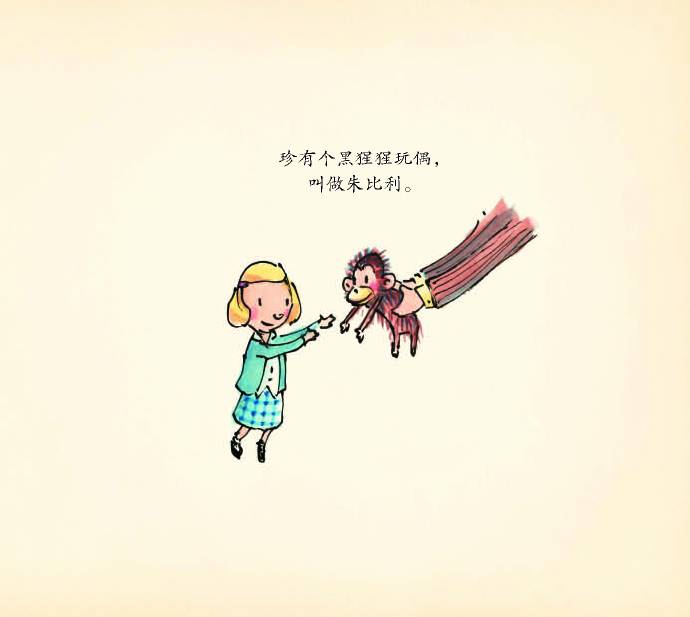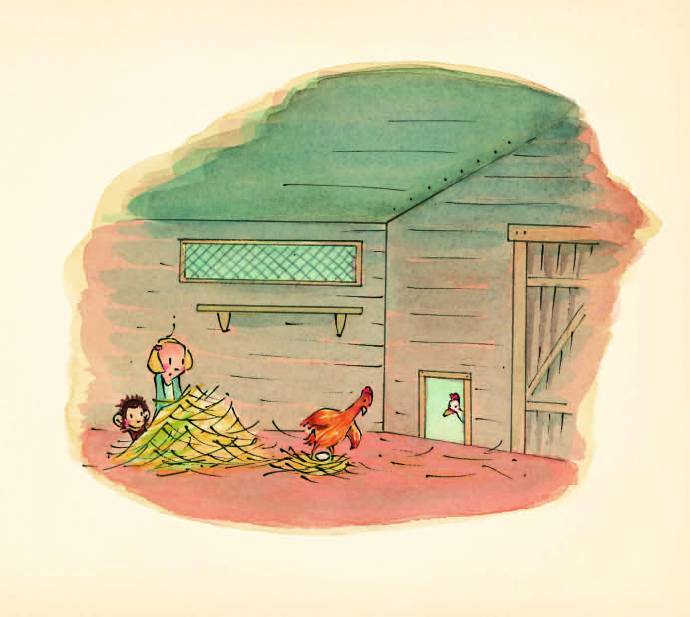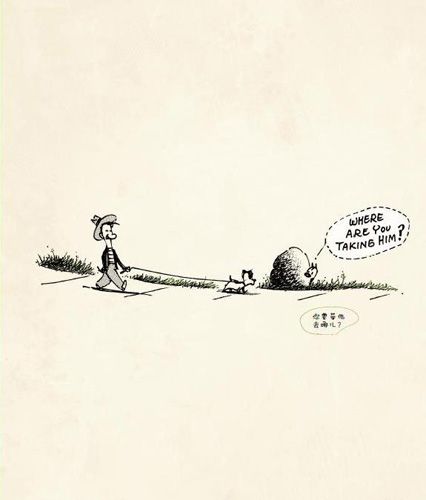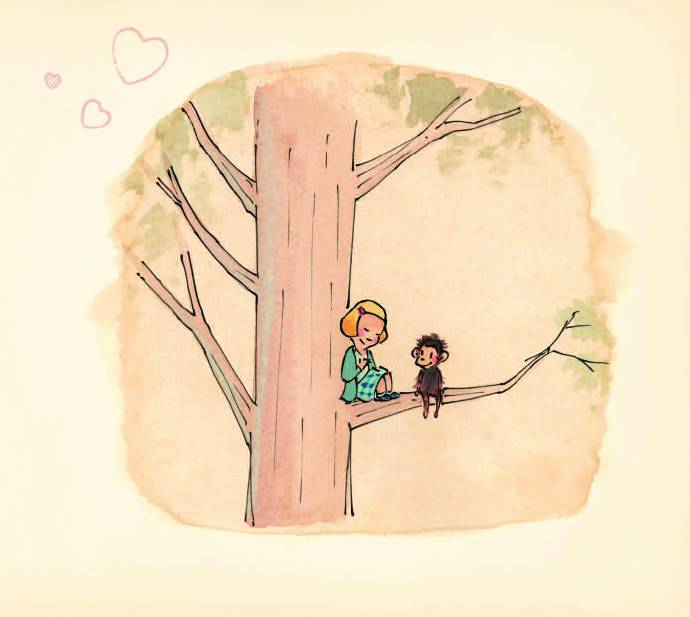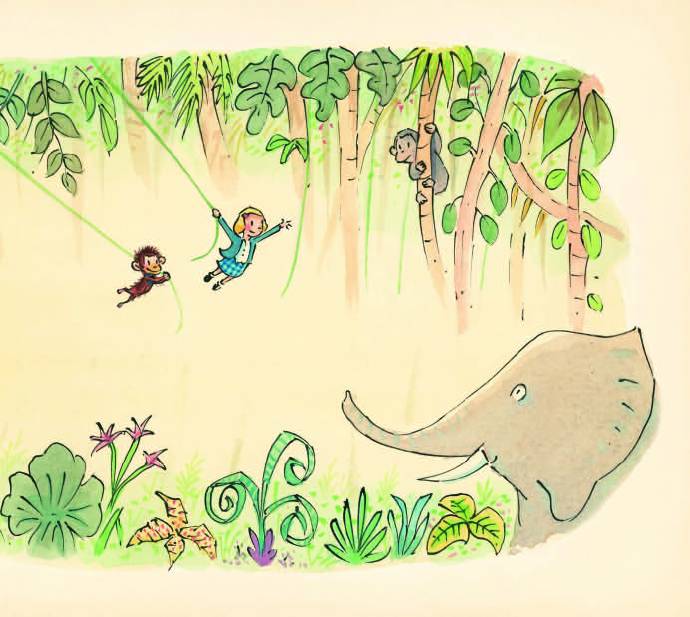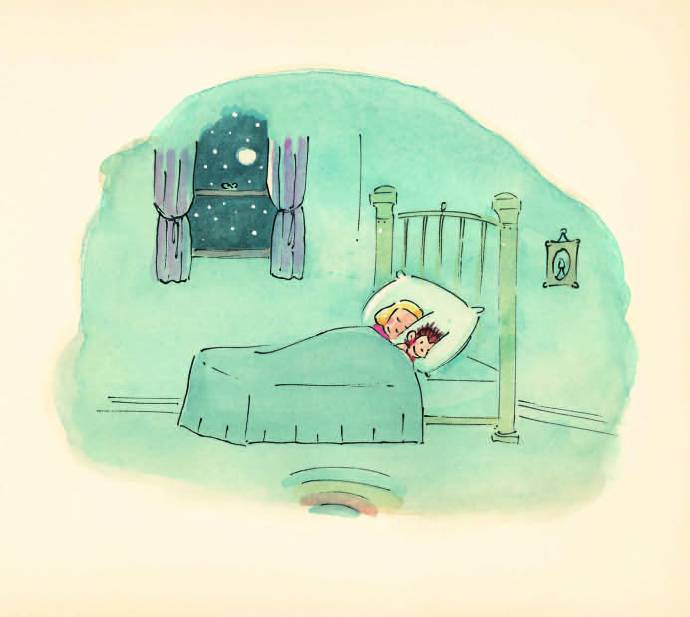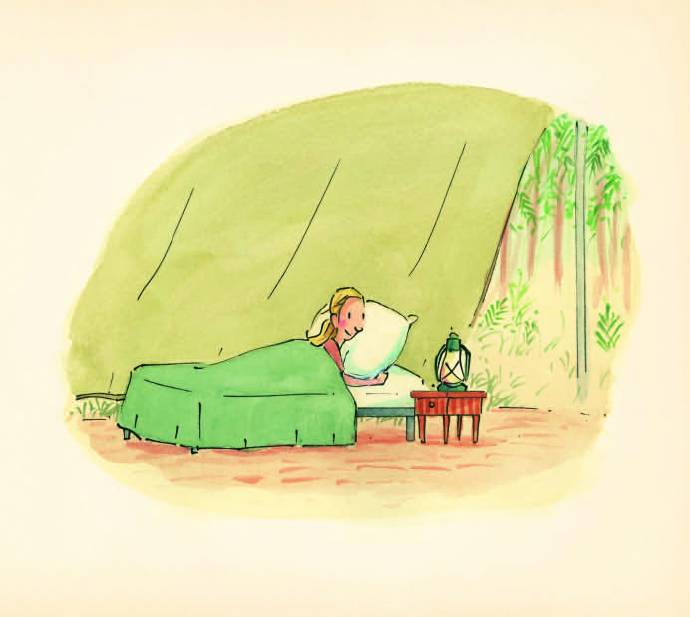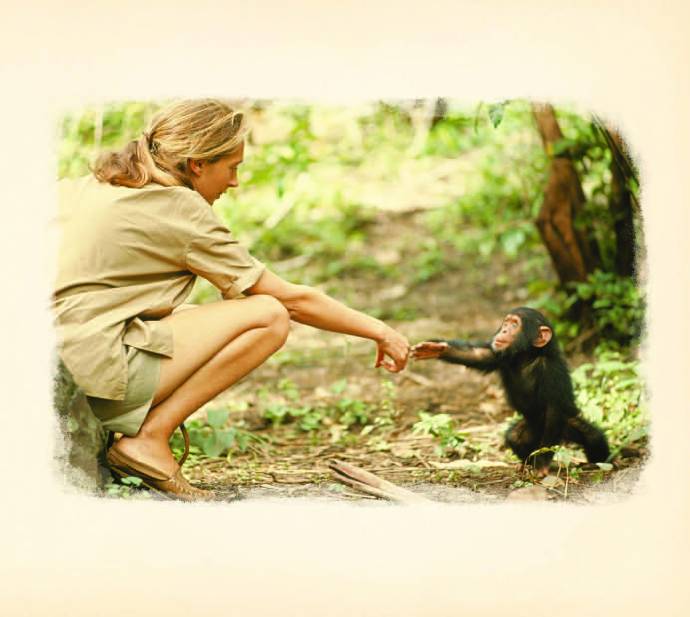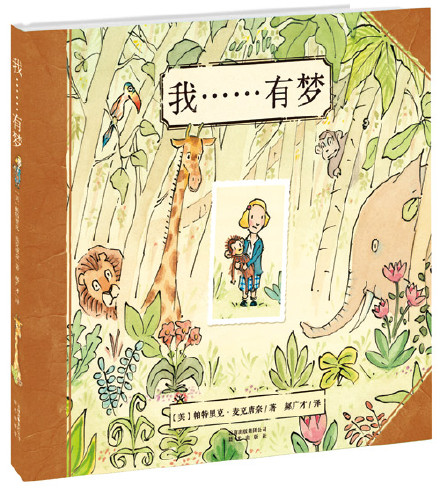
Unlike typical picture books, “Me…Jane” tells a true story. Jane Goodall, the protagonist, was a renowned wildlife biologist and a highly active conservationist. Her Roots & Shoots program, one of the most active environmental education programs for youth, remains a major focus. Of course, her story with chimpanzees is of primary interest. This picture book recounts her childhood, and the author seems to be trying to uncover the story of a remarkable woman.
However, this is a seemingly simple story, and readers seeking the “maturity of a great man” may be somewhat disappointed. What they see is little more than the daily activities of a cute little girl and her toy chimpanzee. She wanders the outdoors, curious about everything she sees, even sneaking into a chicken coop to watch the hens lay eggs. She reads and draws, climbs a tree and sits in meditation, her imagination running wild, dreaming of traveling to Africa like Tarzan… until one day, her dream comes true. The final photo, showing an adult Jane reaching out to touch a baby chimpanzee, is truly heartwarming. But many readers may not understand how truly powerful this scene is. Before Jane Goodall, it was rare for humans and chimpanzees to come within 100 meters of each other naturally. Yet, in this image, they interact naturally, as if they were truly human.
But what kind of force drives that lovely little girl to pursue her dreams?
Almost every reader will agree that this is a delightful picture book, with concise text and warm colors. The little girl and chimpanzee are both adorably drawn, as are the imaginary African animals that appear later. Jane undoubtedly came from a loving family and spent an innocent childhood in the pristine natural countryside of England. Her family isn’t depicted in this picture book, yet their presence is palpable. For example, when Jane first mentions her toy chimpanzee, we see her taking Jubilee from an adult’s hands, clearly her father’s. This moment marked the beginning of her lifelong dream. And then there’s the tree named Beech, a birthday present from her grandmother when she was ten years old.
As for her adventure in the chicken coop, the story behind it is even more fascinating. She was only five years old at the time, and to observe how eggs were laid, she spent hours in the incredibly hot chicken coop. But what’s most astonishing is the adults’ attitude: after a five-year-old girl “disappeared” for hours, her mother didn’t call the police! And when she found out later, she didn’t blame her at all, but instead praised her profusely. Twenty years later, this remarkable mother accompanied her daughter to her first camp in Gombe, Africa, encouraging her to stay there and observe chimpanzees. But those stories will be found in her autobiography.
The author and artist of this book, Patrick McDonnell, is also a man with a remarkable story. He is a renowned American cartoonist, best known for his comic strip, MUTTS, which appeared in countless newspapers and magazines. Charles Schulz, the creator of the Peanuts comic strip, hailed it as “one of the best comic strips ever created.” The MUTTS characters, Earl the dog and Mooch the cat, are both hilarious and thought-provoking. Patrick blends his love of animals with a Zen-like philosophy in his comics, believing that the greatest benefit of comics in modern society is that they help people slow down. Not surprisingly, he also serves on the boards of the Humane Society of the United States and the Animal Welfare Fund. In 2009, he collaborated with renowned spiritual teacher Eckhart Tolle (author of The Power of Now) on the book Guardians, which explores the insights that animals, particularly pet dogs, offer us about human existence: animals may very well be our guardians.
It’s natural and perfect for a cartoonist who loves animals to draw a lovely picture book about a scientist who advocates for protecting wildlife and helping to make the earth a better place.
Patrick has always admired Jane Goodall and paid tribute to her in a MUTTS cartoon. Earl, the dog in the cartoon, claims to sometimes suffer from “love fatigue,” but has found a cure: frequently looking at Jane’s autographed photos. A lighthearted and humorous cartoon helped establish a friendship between the two. After two formal visits and a reading of her autobiography, Reasons for Hope,
.
… he came up with the idea for this picture book. When he finished the first draft and showed it to Jane, he was nervous. To his surprise, she praised it fervently, only noting that she wore hairpins, not headbands, as a child. Patrick explained that it was based on a photo in her autobiography. Jane told him that the photographer had put it on her for the photo; she never wore it herself. So, in the picture book, Jane wears hairpins.
Sharing these details helps readers understand the complex creative process behind this seemingly simple picture book. Patrick has selected several particularly representative passages from Jane Goodall’s extensive biography, presenting them with refined text and meticulously designed illustrations. Reading a picture book like this shouldn’t be rushed.
Pay close attention to the images in the book, which are composed of photographs and drawings. The drawings take two distinct forms: light, soft watercolors with a touch of cartoonishness, primarily depicting Jane’s childhood; and woodcuts with strong lines and clear images, believed to be from the late 19th and early 20th century printmaking style, primarily depicting animals and plants in nature. The artist attempts to capture Jane’s two distinct spiritual worlds: a romantic side and a rigorous scientific spirit. From a scientific perspective, Jane exhibited the qualities of a scientist even in her childhood: a passion for personal experience, patient observation, diligent reading, and meticulous record-keeping. The Crocodile Club magazine in the book is a childhood creation of Jane’s. However, the romantic side expressed in watercolors was also particularly important to Jane. It was this side that led the frail Jane, unable to attend college due to her poor family background, to venture deep into the African jungle, spend time with chimpanzees, and ultimately to become a wildlife biologist. In the second half of the picture book, Jane, sitting in the tree, unknowingly enters the world of imagination, from the British countryside to the colorful African jungle, where she and the chimpanzee swing on vines in the forest…
When it comes to the simplicity of words, Patrick, as a cartoonist, is definitely a master. His words are often most touching when they are very simple. For example, when Jane is lying on the grass surrounded by chickens, the whole page only reads “It
was a magical world full of joy and wonder, and Jane felt very much
a part of
If you savor it carefully, you can feel how unique Jane is as a zoologist. She loves the world deeply and sees animals and humans as part of the earth’s big family, including herself. When Jane and her toy chimpanzee are sitting in the tree, the text on the double page is simpler: Jane
could feel her own heart beating, beating, beating.
This is what the author wants to say to children. In fact, adults can also benefit greatly from it——
Learn to listen to your heart.
Ajia, written in Beijing in February 2013
